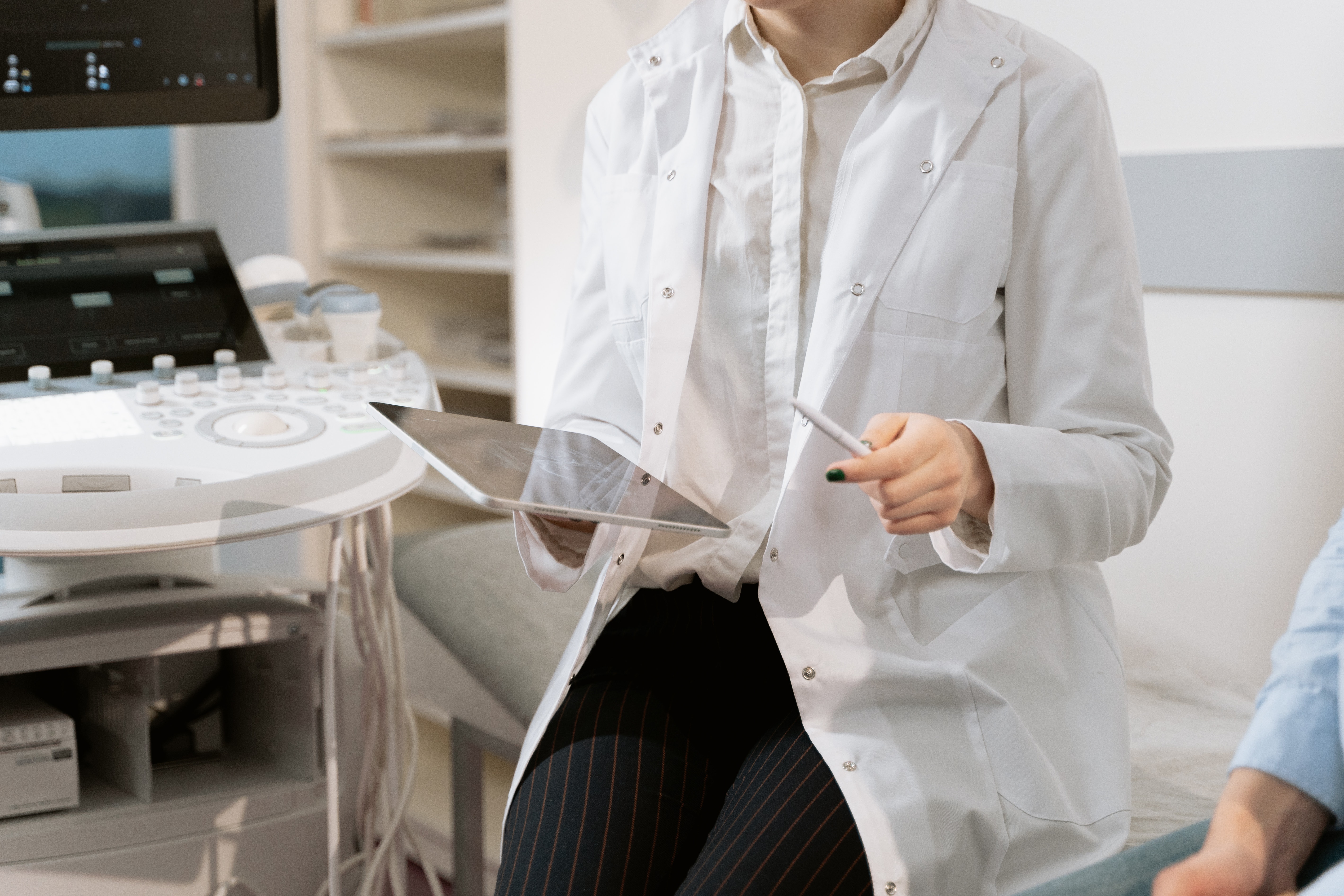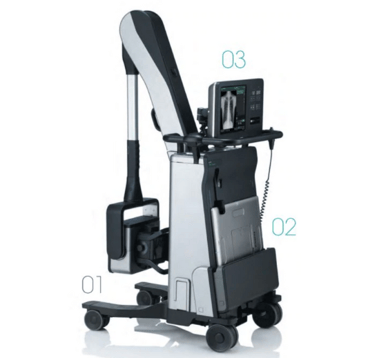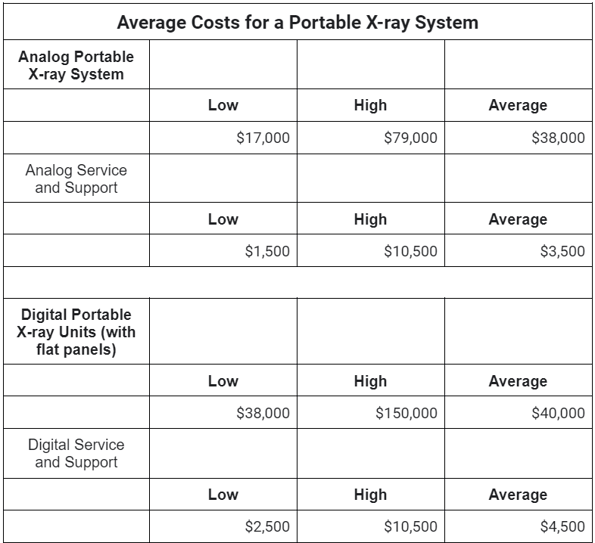Today, portable imaging technology is utilized for a variety of reasons, in a multitude of industries. The accessibility and flexibility of the medical equipment means a practitioner can now offer these mobile services to all different types of patients and diagnoses
Portable x-rays are not a new concept. For years, this type of technology has been routinely used for patients that are too unwell to visit the radiology department. It’s not the hardware that has changed much, but the affordability.
In this article, we’ll examine the type of portable systems on the market, the benefits, and costs you can expect when purchasing a mobile x-ray machine for your business.
What is a Portable X-ray System?
The first step is understanding exactly what constitutes a portable x-ray system. A portable x-ray machine is a unit that’s smaller than a fixed one and can be moved from place to place. It enables radiographers, dental professionals, chiropractors, and vets to take images of patients without having to call them into a lead-lined room.
The latest digital radiography (DR) detector portable x-ray units allow for common diagnostic exams (like chest x-rays) in almost half the time previously required for film-based exams and computed radiography (CR).

Types of Portable X-ray Systems
If you're trying to decide on the type of portable x-ray system that best fits your business, here are a few models to consider:
SourceRay Portable X-ray
The SourceRay portable x-ray system offers an agile and lightweight solution that’s easy to maneuver through tight spaces, in and out of cars, and from room to room.
The digital equipment is available with Cesium DR Panels or Gadox, and image processing software that’s simple to use.
Cost: $17,000 - $35,000
monthly fee starting at $1,153.73/mo
MinX-ray HF120
A portable, powerful, high-quality imaging system, the MinX-ray HF120 is a lightweight design that provides the best output available from a 120V powered unit. It offers the portability patients need and is compatible with all film and digital capture systems.
Cost: $20,000 - $35,000
Fuji FDR Portable X-ray
The Fuji is a battery-powered unit that comes with a built-in DR panel. More lightweight than other models, it saves space and is easy to transport. It has a steeper price point than other portable x-rays but that’s due to its unique, post-processing software that provides higher-quality images.
Cost: $75,000+

One of the biggest mistakes people make when buying a portable x-ray system is assuming they all serve the same function. Below are some of the various ways functionality can influence the cost and what you can expect to pay:
The Cost of a Portable X-ray System
It all depends on the type of unit, the features you are looking for, and the maximum power output. Here are a few factors that determine price:
- Technology segment (analog vs. digital)
- Power rating of the unit’s chassis
- Type of size of flat panel detector
New, fully-digital portable units are the most costly and will run a business anywhere from $125,000 to $235,000 depending on the maximum power output and the type of detector chosen.
Panel Types and Sizes
This is a huge factor in determining the price of a portable x-ray system. Multiple sizes of flat panels are available to be paired with mobile units.
Larger panels typically run at 14” x 17”, whereas smaller panel sizes vary, including:
- 10” x 12”
- 17” x 17”
Although it is possible to use smaller and larger panels together with one unit, this will increase the price dramatically.
Smaller panels typically fit best in NICUs and for podiatry imaging. Larger panels best serve other types of portable x-ray exams, like hips, chest, and abdomen.
A Combined Solution
Most analog portable x-ray systems require an average investment of $17,000 - $30,000 (as compared with their digital cousins). However, advances in flat panel detector technology have made digital systems (and flat panels) the top standard among American hospitals.
Hospitals with a legacy analog solution can choose to retrofit a detector (which usually costs between $20,000 - $60,000 depending on the type and size of the panel). New, fully digital, portable systems run between $75,000 to $150,000 depending on the maximum power output and the type of detector.
To help you get a better grasp on pricing and financing a digital x-ray system, here is a table of costs to be expected depending on the type of system you purchase:

Considerations When Purchasing a Portable X-ray System
It’s important to note there are many factors to consider when purchasing a portable x-ray machine. Some states have different requirements regarding the use of a mobile x-ray system.
For example, New York allows you to use handheld units only when a traditional system is not available. In emergency cases, a traditional x-ray system will need to be used.
Before purchasing a system, take these factors into consideration:
Mobility
Do you need to move in and out of a car, or back and forth between facilities with the equipment? If the answer is yes, you’ll want a lightweight, mobile system with good wheels.
Power Source
What type of power source do you need? A traditional system uses 100 amps, enabling it to produce a high dose.
Some mobile systems need to be plugged into a standard 110v wall socket, while others utilize battery power; using much less energy. While they may fit into smaller spaces, mobile units tend to get less penetration which makes it difficult to x-ray larger patients.

The Benefits of a Portable X-Ray System
Substantial diagnostic advantages can be realized with a portable imaging system. Especially mobile units that are equipped with digital flat panel detectors. There are a variety of benefits to handheld x-ray systems, including speed, convenience, and flexibility.
Mobile technology allows physicians to view radiographic images in seconds after exposure, rather than wasting precious time on development. This creates a more streamlined workflow for clinicians and offers an opportunity to improve patient care.
Portable x-rays systems are also smaller than most machines and thus, fit into tighter spaces. These types of x-ray systems are helpful in situations like urgent care where they may need more space to work on the patient.
Portable X-ray Systems Service and Support
When it comes to the service and support of a portable x-ray machine, most offices opt for full-coverage service plans. These usually include drop protection for the battery, tube, and detector due to the high cost of repairing and replacing flat panel detectors.
An analog system may only require partial coverage, like second-call or time and materials only. That’s because they can often be serviced by a trained hospital biomedical engineer (BME).
Summing it Up
When thinking about the perfect x-ray system that fits into your budget and needs, consider:
- Imaging quality requirements
- Staff experience and training
- Types of machines
- Pricing
- Convenience and flexibility
Mobile digital x-ray equipment is a smart move when you are looking at the long-term. The amount you save on film and developing costs alone means the system virtually pays for itself.
If you are looking for a portable x-ray system or any other type of imaging equipment, contact us and we can assist with your search. Our trained staff at Maven Imaging is here to help you find the best possible fit that will save you office time and money.

